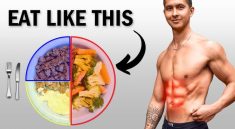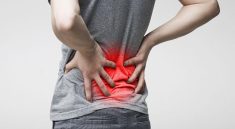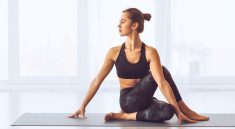Pilates Pila – Pilates has long been celebrated as a mindful movement practice that strengthens the core, enhances flexibility, and supports postural alignment. But in recent years, something extraordinary has taken shape—the evolution of Pilates training from traditional mat routines to innovative, tech-enhanced equipment that’s transforming the fitness world. If you still think Pilates is just about rolling on a mat, prepare to have your perspective flipped.
In 2025, Pilates isn’t just surviving—it’s thriving and evolving at a pace that’s both exciting and surprising. This new era of Pilates blends biomechanics, resistance training, and even AI technology into one of the most holistic fitness approaches available today. So, what exactly does this evolution look like, and why are so many people trading yoga mats for machines?
A Quick Look Back: The Origins of Pilates on the Mat
The Pilates method was developed by Joseph Pilates in the early 20th century as a system of physical conditioning. Originally designed for rehabilitation, particularly for injured soldiers during World War I, mat Pilates emphasized breath control, alignment, and body awareness.
The beauty of mat Pilates lies in its simplicity. With only a mat and your body weight, it provides an accessible entry point for practitioners of all levels. Core strength, spinal articulation, and muscular control form the foundation of every session. For decades, this version of Pilates dominated studios and home workouts alike.
But as fitness trends evolved and the demand for more dynamic, versatile workouts grew, Pilates also began to change—quietly, but powerfully.
The Rise of Reformer and Equipment-Based Pilates
Enter the reformer. This spring-based resistance machine may look intimidating, but it has revolutionized the way people experience Pilates. With pulleys, straps, and adjustable resistance, the reformer allows for a wider range of motion, deeper muscle engagement, and a greater focus on strength building.
Soon after, other machines followed: the Cadillac (or trapeze table), the Wunda Chair, the Ladder Barrel, and most recently, the CoreAlign and Bodhi Suspension systems. These apparatuses turned Pilates into a three-dimensional experience, where gravity, balance, and resistance training converge.
These machines didn’t replace mat work—they elevated it. Practitioners began combining classical routines with modern equipment, resulting in a more personalized and transformative practice.
Why Machine-Based Pilates Is Gaining Momentum
There are several reasons why equipment-based Pilates is now in the spotlight. First, the demand for functional fitness is higher than ever. People want workouts that mimic real-life movements, and machine Pilates fits the bill by enhancing coordination, balance, and strength in multiple planes.
Second, machine Pilates is highly adaptable. Whether you’re recovering from injury, training as an athlete, or maintaining mobility in your 60s, the machines can be adjusted to fit your needs. Springs offer resistance that builds strength without strain, and positions can be modified to accommodate limitations.
Lastly, the aesthetic appeal cannot be ignored. With Instagram-worthy reformer studios popping up in major cities, machine Pilates has become both a wellness statement and a lifestyle brand.
The Tech Revolution: Pilates Meets Innovation
The evolution of Pilates training didn’t stop at springs and straps. The latest wave of reformers and towers now includes digital tracking, motion sensors, and app integration. You can now receive real-time feedback on your form, track your progress over time, and even take guided virtual classes directly from your smart reformer screen.
Some studios even use VR headsets for immersive breathing and focus exercises, combining the calming effects of meditation with the structure of Pilates flow.
This merging of Pilates and technology is giving rise to what many call “Intelligent Pilates”—a fully personalized and data-driven practice that adjusts itself to your goals and capabilities.
What This Evolution Means for You
Whether you’re a long-time mat Pilates fan or a total beginner, the evolution of Pilates training presents a new set of opportunities. If you’re looking to deepen your practice, machines offer enhanced precision and variety. If you’re new to fitness, smart reformers can guide your movements gently and accurately.
Moreover, hybrid classes now combine mat, reformer, tower, and AI feedback, making workouts more dynamic and results-driven. You can still enjoy the core benefits of Pilates—improved posture, flexibility, and mind-body awareness—but now, those results come faster, with more variety and less guesswork.
For those who prefer to stay home, portable reformer alternatives and digital class platforms bring this evolution into your living room. No more excuses—Pilates is more accessible, effective, and innovative than ever.
Looking Ahead: A Future Powered by Precision
The Pilates world is no longer just about controlled breathing and spinal curls on the mat. It’s about harnessing technology, biomechanics, and personalized feedback to enhance every aspect of the practice. The evolution of Pilates training signals a shift not just in fitness trends, but in how we understand movement, health, and longevity.
We’re entering a future where Pilates doesn’t just complement your lifestyle—it shapes it. And whether you meet it on the mat or the machine, it’s clear that the Pilates of tomorrow will be more intelligent, immersive, and impactful than ever before.



